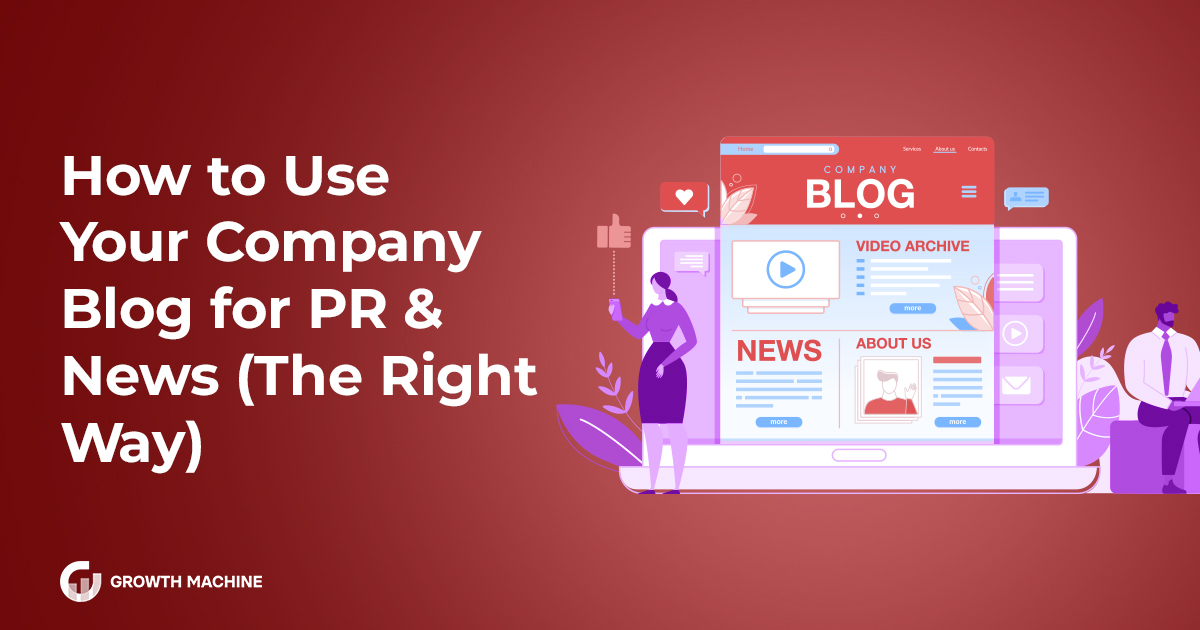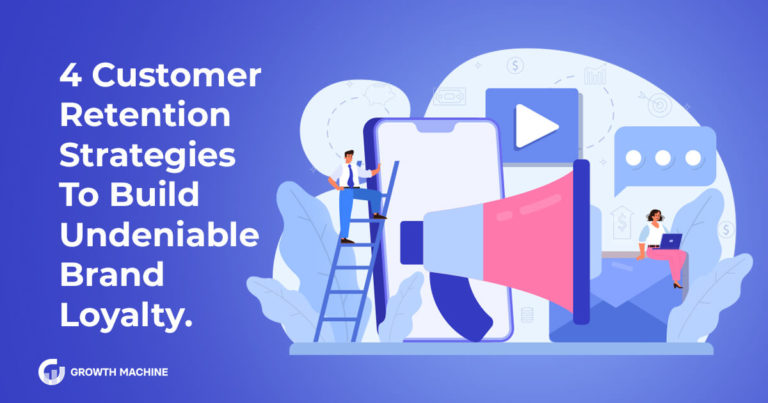How to Use Your Company Blog for PR & News (the Right Way)
I recently made the case that when you’re getting executive buy-in for a content marketing strategy, there’s more to it than SEO. There are also benefits to having your own content platform, such as a company blog.
An owned content platform means you’ll always have a free place for sales enablement content like case studies, customer experience content like how-to articles, and company news and public relations (PR).
After all, it typically costs a few thousand dollars to issue a single press release on a service like PR Newswire or Business Wire.
Don’t get me wrong — press release distribution centers are great for major news: They’re a scalable way to publish official messaging and reach reporters en masse.
But not every company announcement is press release-worthy. In fact, it’s common for companies to send only a handful of press releases each year.
Here’s where your company blog comes into play. Reporters who end up covering your news will link to you (so you’ll get some link building), and when people search Google for your company’s new product or features, you’ll rank in a top spot.
So as you consider how to use your blog for company news and PR, use this as your guide:
- Understand what should be in a press release and in a blog post.
- Make sure company news fits into your existing content strategy.
- Structure your PR blog posts in a compelling way.
There’s a lot to unpack. If you prefer this in a visual format, check out our YouTube video instead:
Press Release vs. Blog Post
When you’re considering whether your announcement is worthy of a press release, first ask yourself: Which journalist or media outlet will be likely to report on your news, and what would they say?
Do some research on the publications you admire, and be honest with yourself about the kind of stories they’re interested in.
Did you close a million-dollar funding round? That’s a press release that will certainly get picked up by at least TechCrunch and VentureBeat. They’ll report on the amount you raised, who the investors are, and what your company plans to do with the funding.
Are you a known brand launching a completely new product line? That press release will get traction by at least trade publications in your industry. Those reporters will want to learn more about why you’re expanding your product line and how you saw the business potential.
If your gut tells you that a reporter might find your announcement interesting but not newsworthy, or as a potential nugget of information in a broader news article they’re writing, that’s a sign your announcement is better suited for a blog post.
Still unsure? Here are some examples of press release vs. blog post worthy news:
- A brand new product line should be in a press release… but a new feature or functionality should be in a blog post.
- A business partnership where you’re launching a new product or service with another brand should be in a press release… but a vendor partnership with a new customer support platform would be in a blog post.
- Financial numbers like revenue growth goes in a press release… but your mobile app reaching a milestone of 500 downloads is best suited for a blog post.
- An analysis of your 10,000+ users’ data that signals a trend in your industry would make for an interesting press release… but a survey to 100 people in your email list would be a fun blog post.
When you announce news on your blog, you can still pitch it to reporters. It’s actually a good way to build a relationship with them. Think of how authentic and even helpful it could be to personally send this note to a reporter who covers your industry: “Just wanted to give you a heads up we published insights regarding our users’ data and how it relates to recent trends in the space.”
This could help you stay top of mind for reporters. If they’re working on an article about a trend in your space, they might reach out to you for a quote. And when you do have bigger news, they’re more likely to pay attention.
Want more on determining whether something’s a good press release or blog post? Check out our companion YouTube video:
Company News Within Your Content Strategy
Company news should be one pillar among several others. Overall, your content pillars might look something like this:
- Thought leadership or happenings in your industry
- Sales enablement, like case studies
- Customer experience, like how-to content
- Company news and announcements
A good content strategy will always include a key focus on helping your audience rather than talking about yourself. There are many examples of audience-centric content done right, ranging from true thought leadership to customer support.
For instance, venture capital firm First Round Capital has the well-respected First Round Review, which publishes lengthy articles geared towards helping founders with business strategy and hiring decisions. Sometimes these are in-depth profiles of executives, and other times they’re thoroughly researched playbooks for various job functions.
Then there’s Zendesk’s blog, a resource that covers the customer experience industry. Their blog posts also weave in customer support content to offer their users tutorials or advice on using the Zendesk platform.
Remember that your audience’s needs come first, and company news comes second. If your audience notices you only use your blog to talk about yourself, then there’s nothing in it for them — and there’s no reason for them to keep coming back.
Use your blog when you have an announcement your users can benefit from knowing.
Writing That Blog Post
Now that you have your blog post-worthy news and it’s working as part of a larger content strategy, you’ll want to make sure you publish the best blog post possible. Make sure your announcement is exciting and that it’s clear how your users can benefit from it.
One starting point is to act as though you’re a reporter who has an exclusive scoop on your company’s news. Try to be objective and dig deep so you can provide the most meaningful information to your audience. Here’s a framework:
Write an eye-catching headline that clearly states the news
Think of this as equal parts attention-grabbing and SEO opportunity. You’ll want to entice your audience to read, and you’ll also want to make sure you use your product or feature name in the headline so when users do a Google search for your product, your blog post will rank.
You can keep it simple with a couple of these common formats:
- Introducing <Product Name> for <Purpose>
- Do <Purpose> With Our New <Feature Name>
- We Reached <X Milestone> With <Specific Reason>
- New <Data Point> Tells Us <Interesting Trend>
Including the post’s purpose will easily tip off to your users what the announcement means for them.
Be specific in your blog post
If your blog post is about a new feature, make sure to explain what the new feature is and how it works. Give the backstory on why you decided to launch this, what it means for the user experience, and what you hope to accomplish.
If your blog post is about company data and how it relates to an industry trend, be sure to write a couple paragraphs on how your team gathered and analyzed this information. Include observations, and consider putting some stats or key facts into bullet point form to help make the information shareable.
Use this opportunity to make your leadership or your colleagues shine. Get a quote from a departmental lead or another colleague who worked on the feature or partnership you’re announcing.
Include visual media
Use visuals to enhance your text. Include photos of a new product, GIFs of how the new feature works, a short video on the user experience. It’s your news, so you should have access to the best art to make the announcement shine.
Ahrefs does a nice job of using red-highlighted boxes to show what’s new about their dashboard. Levels, the continuous glucose monitor company, not only uses app screenshots but also charts of glycemic responses from research studies.
Point users to additional information
This is a great opportunity to help users learn more. Be sure to include information like price, and when and where users can buy the product. Link to related news or other relevant articles within your blog. Make sure you queue up help articles so your software users know where to go for troubleshooting.
And if you think there’s a chance reporters will want to reach out, consider adding a link to a contact form that goes straight to your marketing team.
Questions?
As you continue thinking about how company news fits into your overall content strategy, you can always reach out to us with questions. Our Twitter DMs are open.
When you want to take your content next level, contact us so we can partner on a custom proposal.







